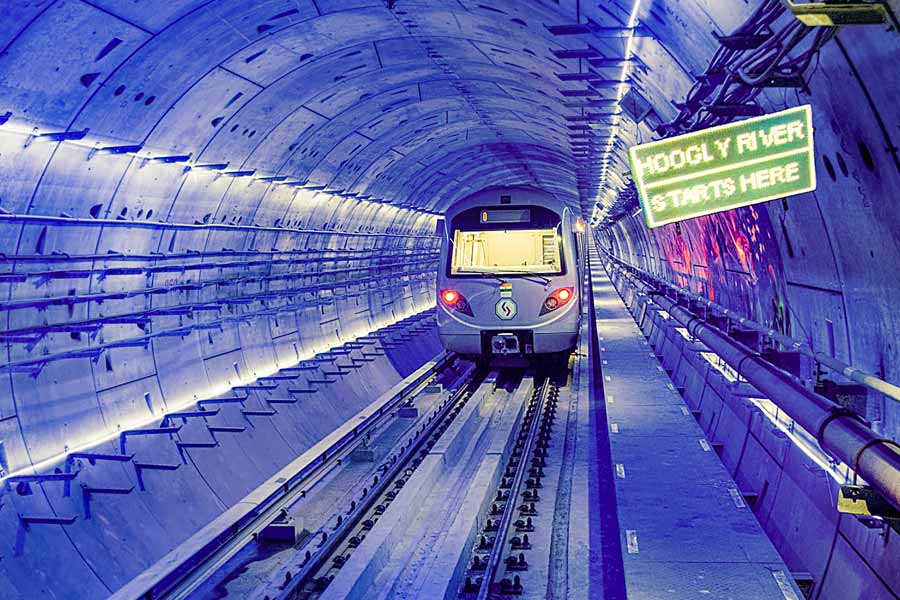The Metro ride from Howrah Maidan to Esplanade brings respite from congested and dirty roads around the area but also takes away the pleasure of looking at some grand buildings, the majestic Howrah bridge and river Hooghly.
A bus ride from Howrah Maidan to Kolkata was unbearable at times, more so during the heat of summer or on a rainy day. The compensation lay in looking at the colonial mansion Colvin Court, a residence for officers of the railways, the Howrah district library or the delight of crossing the Hooghly along the bridge.
“Crossing the Howrah bridge or the view of the vast expanse of the Hooghly have their own allure,” said Saurav Basu, a resident of Howrah Maidan.
“But the roads around Howrah Maidan are almost always congested,” he said.
Hawkers sitting on pavements and even on the roads make walking difficult.
Autorickshaws, battery rickshaws, buses, taxis, private cars and hand carts ply through the narrow roads leading to the bridge. The edges of Bankim Setu have muck and waste lying on several stretches.
A ride in the Metro between Howrah Maidan and Esplanade is taking a little over 8 minutes. The bus ride between these two places takes about 40 minutes when traffic is not too bad.
A bus headed to Kolkata from Dasnagar comes via the Fansitala More. One gets a glimpse of Colvin Court and a broader view of the Howrah district library at this crossing. Several other buses headed to Kolkata take the Bankim Setu, the sides of which had muck and solid waste on Saturday afternoon.
Both routes lead to Howrah bridge.
Colvin Court was built in 1925 as a residence for the officers of East Indian Railway, the predecessor of today’s Eastern Railway.
“It is still used as residences for senior officers of Eastern Railway,” said Sanjoy Mookerjee, who heads the Bengal chapter of Rail Enthusiasts Society, a group that researches the history of India’s railways and tries to conserve it.
The East Indian Railway company was formed in 1845. Eastern Railway, one of the 19 zonal railways in the country now, was formed in 1952.
The foundation stone of the Howrah district library was laid in October 1956, a plaque installed there announces.
Alapan Bandyopadhyay, a former district magistrate of Howrah and also a former chief secretary of Bengal, said the open ground (Maidan) that gave the place its name, Howrah Maidan, effectively no longer exists.
Sarat Sadan and the areas surrounding it once used to be open ground. It was the lungs of Howrah city, equivalent to what the Maidan is for Kolkata.
“The construction of Sarat Sadan led to enclavisation of the area,” Bandyopadhyay said.
“The Metro will further reduce the old Howrah Maidan in civic vision and public memory. This, though, is unavoidable. With the advancement of time, better and swifter connectivity is of paramount importance and is in sync with the demand of people.”
Bandyopadhyay said not being able to see the Howrah bridge and the majestic expanse of the river Hooghly during journeys to the metropolis of Kolkata would probably be a bigger change for the civic mindscape.
A pontoon bridge that stood over the Hooghly and connected Kolkata and Howrah — the precursor to today’s Howrah bridge — had to be lifted whenever a large ship came under it. It was commissioned in 1874 for 25 years, but remained in use till 1943, when Howrah bridge was commissioned.
Howrah Maidan resident Basu, who works for a tyre manufacturer in Dalhousie, said the ride will also bring “great relief from dirty stretches”.
“Waste management is a big issue in Howrah. It has improved a bit since the Metro station came up but there is still waste lying on roads,” he said.
